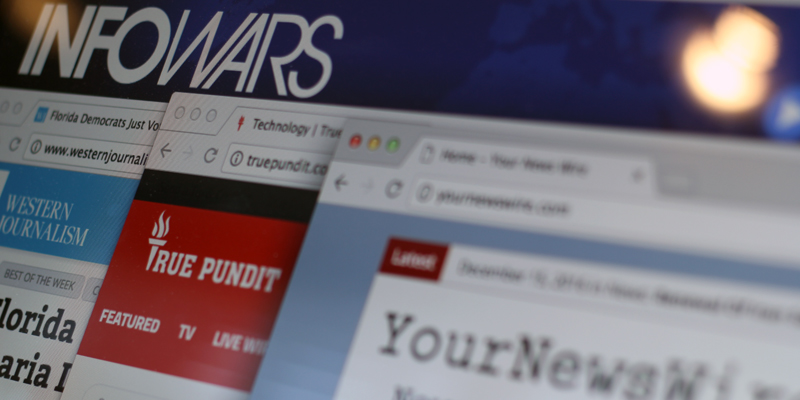In early December, an incident involving a North Carolina man at a pizza restaurant in Washington, DC, showed a violent and unintended consequence of fake news.
Motivated by false news reports circulated on social media, Edgar M. Welch, a 28-year-old Salisbury man, decided to investigate a conspiracy theory involving the Comet Ping Pong pizzeria. On Sunday afternoon, Dec. 4, Welch walked into the restaurant with an AR-15 assault-style rifle and pointed it an employee. After the employee and other occupants fled, Welch discharged the rifle.
Welch surrendered to police within 45 minutes and was charged with assault with a dangerous weapon. There were no reported injuries.
Fake news now influences people throughout the world, with documented incidents in Australia, Brazil, China, Germany, France, India, Italy, Myanmar, and the United States.
Representatives of social media and technology companies, including Facebook and Google, are attempting to determine how to respond. In a Princeton University hackathon conducted in mid-November, a team of four American university students created an algorithm designed to identify fake news circulated on Facebook.
Until social media and technology companies resolve issues of scale, censorship, and perception, the simplest method of news verification by social media consumers is a manual one. Before re-distributing a story on social media, or an unfamiliar source that seems suspicious, American consumers can check the story with at least three reliable fact-verification websites:
- Snopes.com, an award-winning website managed by David and Barbara Mikkelson, a couple in Los Angeles, Calif.
- Factcheck.org, a website run by The Annenberg Public Policy Center at the University of Pennsylvania.
- Politifact.com, a Pulitzer Prize-winning website run by editors and reporters at the Tampa Bay Times.
Verifying news for oneself requires more time and clicks than a leisurely scroll through Twitter or Facebook. But the result is more accurately informed world.
Jayda Brown, a communication student at Queens University of Charlotte, researched information for this story.
GUIDES TO FAKE NEWS DETECTION
FactCheck
Fact Check, a project of the Annenburg Public Policy Center, lists a few simple observations a viewer could do when skeptical of an article’s accuracy.
Snopes
Snopes, a website known for informing on false news, gives tips on detecting deceptive websites, and where to find news verification on their own site.
USA Today
How Brooklyn College student Jillian Vandiveer discovers false information.
Nieman Lab
The Nieman journalism lab at Harvard University analyzed what happened when Melissa Zimdars, a professor of media studies at Merrimack College, created a guide to the analysis of news and website credibility for her Introduction to Mass Communications course.
